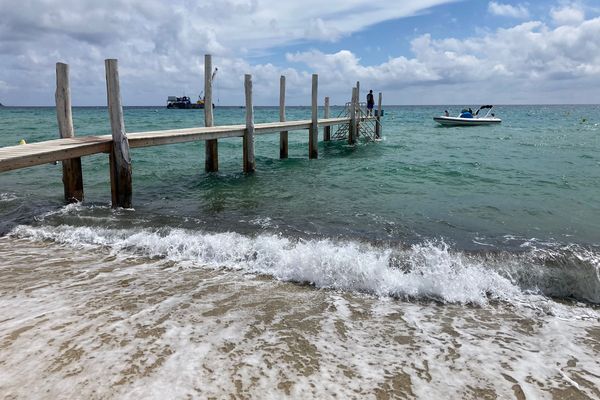Off the coast of Saint-Tropez in the Var, 200 mooring buoys for boaters will be installed by 2025. The goal? Spare Posidonia meadows and the seabed when several hundred boats come to anchor at the height of summer.
Protecting what is invisible and covers the funds. This is the leitmotif of those who work to protect Posidonia grass. This aquatic plant helps store carbon and serves as a habitat and nesting place for many marine species. It has been protected since 1998 and falls under the so-called habitat of community interest.
Boats at anchor are legion on the Côte d’Azur in the heart of summer. The Gulf of Saint-Tropez is particularly appreciated by wealthy vacationers whose yachts and sailboats – between 200 and 300 boats – anchor here in the heart of the summer season.
No longer interfere with the bottom of the sea
To counter these harmful effects on the environment, a ZMEL off the coast of Pampelonne – the mooring and light equipment area is being developed.
In 2022, similar developments were deployed in the harbor of Villefranche-sur-mer in the Alpes-Maritimes.
Until today, all boats could anchor above a Posidonia meadow. When the anchor was removed, it scratched the seagrass and damaged it. Now, thanks to these buoys, they will no longer interfere with the seabed.
Jean-Pierre Frésia, deputy mayor of Ramatuelle
200 buoys by 2025
The stretches of fine sand of this part of the Var coast, in Pampelonne, or Ramatuelle, have seen a strange barge moored offshore in recent days. A “test” project began in this first week of June. Its duration: 15 days.
Equipped with drilling equipment and securely attached construction equipment, the crew is preparing for the summer season in their own way.
/regions/2024/06/05/pampelonne-11-66602ddf8fef3897847210.jpeg)
Construction equipment on the open sea… An extraordinary construction site is taking place at the beginning of June.
Construction equipment on the open sea… An extraordinary construction site is taking place at the beginning of June. • © Maxime Meuneveaux/ France Télévisions
The funds of this anchorage development zone will accommodate 200 mooring buoys by 2025. This first test phase allows in particular to carry out the first drillings, to install piles and two buoys. The results will be collected and studied in the coming months, before installing this armada of floats to which the boats can attach.
Drilling on Pampelonne beach in Ramatuelle, for the installation of permanent mooring buoys, began this first week of June.
/regions/2024/06/05/pampelonne-8-66602ddf88bde491636607.jpeg)
The control station for this work makes it possible to communicate with the divers working to install the first piles at some 6 bottom sites.
The control station for this work makes it possible to communicate with the divers working to install the first piles at some 6 bottom sites. • © Maxime Meuneveaux/ France Télévisions
On site, crane operators, technicians and scuba divers operate at a depth of 6 meters. A drill is installed level, perfectly straight. This work platform includes equipment that makes it possible to integrate the piles that will anchor the buoys.
On the surface, “the position of the drilling is clearly determined by GPS which are in our guidance system in the crane and defined on upstream plans” explains Lionel Jacob, the manager of this underwater work.
These are delicate operations, because we work in the middle of Posidonia meadows and all work in protected areas requires special attention.
Lionel Jacob, responsible for this underwater work
Heavy penalties for offenders
Boaters who anchor their boats above seagrass beds are exposed to fines which can quickly ruin their vacation. Posidonia is in fact considered an endangered species in the Provence-Alpes-Côte d’Azur region. It is present at a depth of 40 meters. A decree establishing the general framework for anchorage in French internal and territorial waters of the Mediterranean stipulates the conditions.
Last October, a captain was ordered to pay 20,000 euros after carrying out three anchorages causing destruction of Posidonia. Twice in Cannes in 2021, in the Alpes-Maritimes and once in Saint-Tropez, a year later.
A decision taken by the Marseille maritime court which then, for the first time, condemned it for “significant damage to ecosystems”, and recognized the ecological damage.




